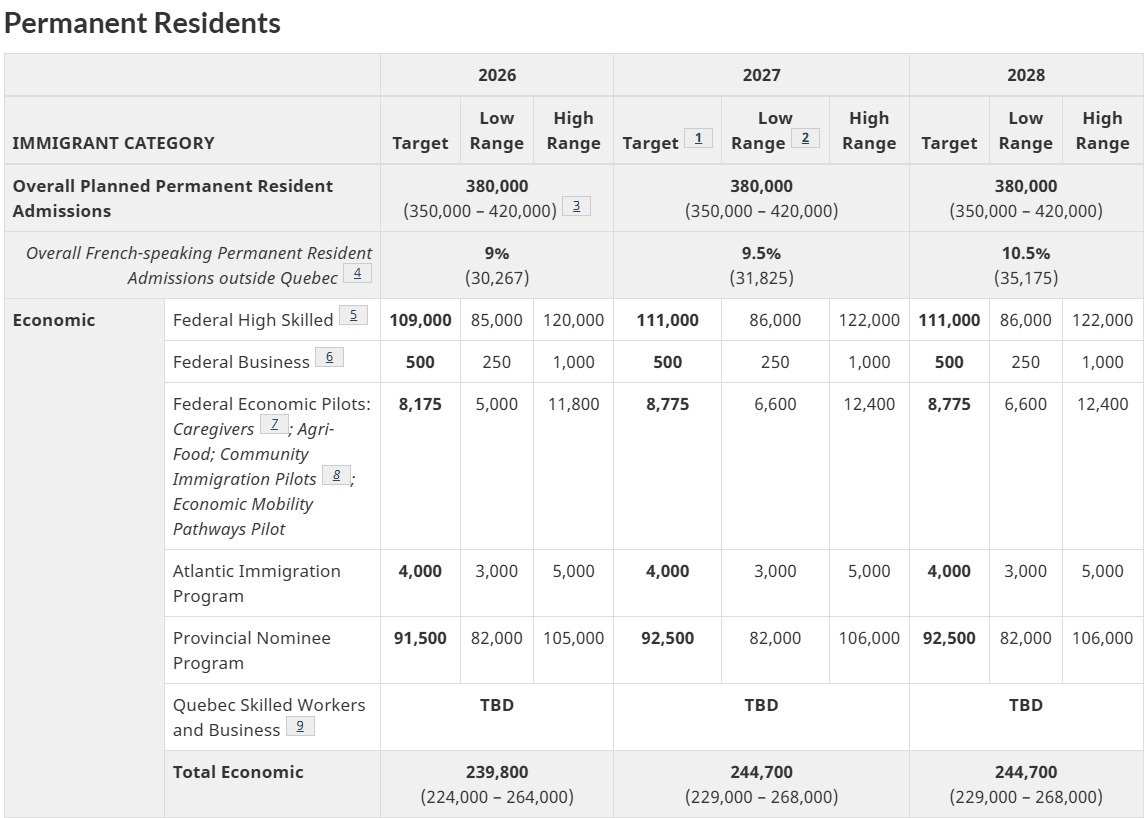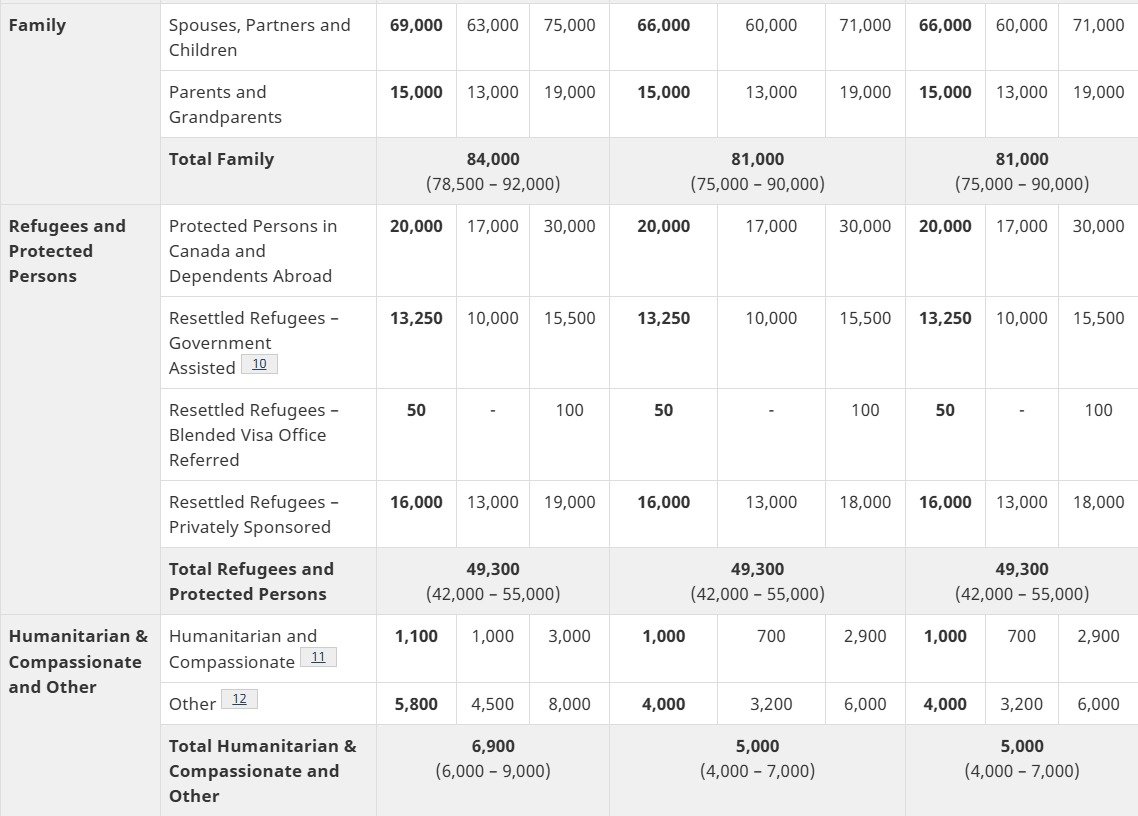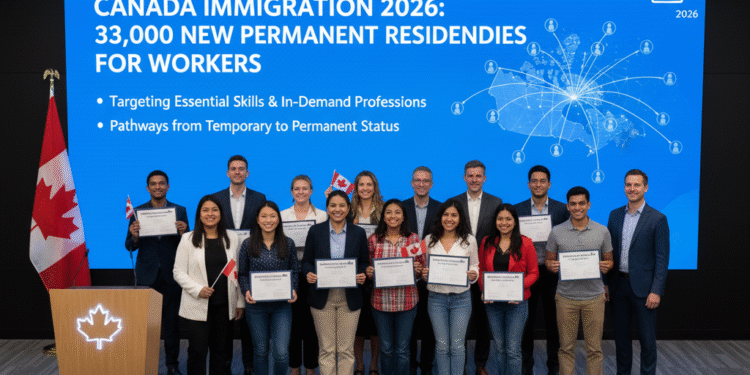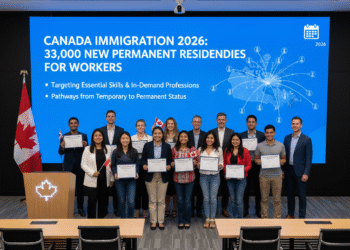The Canada Immigration Update 2026 has brought major excitement among workers and aspiring permanent residents across the country. According to the latest IRCC Annual Report to Parliament, the Canadian government plans a one-time measure to transition up to 33,000 work permit holders to Permanent Residency (PR) between 2026 and 2027. This initiative is part of a larger effort to stabilize the workforce, reduce reliance on temporary residents, and reward those who are already contributing to the Canadian economy.
A Landmark Worker-to-PR Intake & Economic Focus
One of the standout components of the Canada Immigration Update 2026 is the IRCC’s targeted plan to transition up to 33,000 workers already in Canada — those currently on valid work permits — to Permanent Residency (PR) during 2026–27. This major Canada work permit to PR transition highlights the government’s commitment to rewarding workers who are already contributing to the economy and addressing critical labour-market shortages across the country.
At the same time, the Canada PR for workers 2026 plan places greater emphasis on economic immigration, ensuring that a larger share of newcomers meet Canada’s workforce needs in high-demand sectors such as construction, healthcare, technology, and education.
The Broader Immigration Levels Plan: What Remains & What Changes
According to official documentation from IRCC and budget disclosures:
- PR admissions will be stabilised at 380,000 per year for 2026, 2027 and 2028.
- Breakdown by category for 2026:
- Economic class: approx. 239,800
- Family reunification: approx. 84,000
- Refugees / humanitarian / protected persons: approx. 56,200
- The plan also sets targets for French-speaking permanent residents outside Quebec: around 30,000 in 2026 (~9%) rising to ~35,000 in 2028.

On The Temporary-Resident Side:
- For 2026: overall target ~ 385,000 new temporary residents (workers + students) — workers ~230,000, students ~155,000.
- For 2027 & 2028: ~370,000 each year (workers ~220,000; students ~150,000)
- The budget highlights that the temporary-resident share of the population is to be brought down to less than 5% by end of 2027.

The 2026 Budget Context & Immigration Implications
The federal budget released recently by the government embeds these immigration shifts in a broader economic and fiscal strategy. Key immigration-related points include:
- A cut in planned temporary‐resident numbers: for example, international student permits are to drop dramatically (for 2026: target ~155,000 students vs ~306,000 in the previous plan).
- The move from “growth” to “stabilisation” in immigration volumes: the government phrases it as aligning immigration with infrastructure, housing, and social services capacity.
- A shift in emphasis: heavier weight on economic class immigrants (from ~59 % to ~64 % of PR admissions) as part of the strategy to support labour-market shortages
What It Means for Workers, Students & Applicants
- For workers already in Canada: The “33,000 PRs for workers” component creates a potentially strong opportunity to secure permanent residency. Being on a valid work permit, employed in priority sectors and meeting other criteria will be key.
- For prospective students: The sharply reduced student permit targets mean more competition and fewer new student visas, with universities feeling the impact of reduced international-tuition flows.
- For newcomers from abroad: The stabilised PR target (380,000) vs previous higher growth means that while the door remains open, there is less “expansion margin” than before — and economic class remains top-priority.
- For employers & provincial governments: The stable targets provide clearer planning, but pressure remains to identify labour-market-shortage segments and to coordinate with IRCC and provinces on targeted pathways
Conclusion – Canada Immigration Update 2026
The Canada Immigration Update 2026 marks a clear pivot: by offering up to 33,000 permanent residencies to existing workers, stabilising annual PR admissions at 380,000, and significantly reducing temporary-resident numbers, the government is striving for a more sustainable, economically-focused immigration system. For those aiming to migrate, work or study in Canada, the message is clear: aligning your profile with labour-market priorities, picking the right pathway, and acting within the evolving policy framework will matter more than ever















